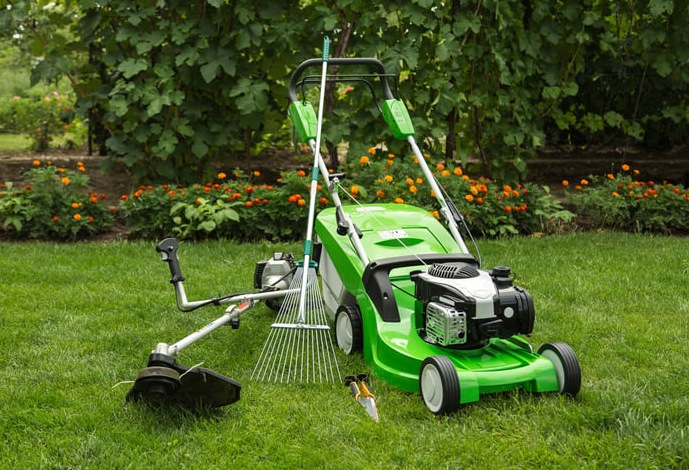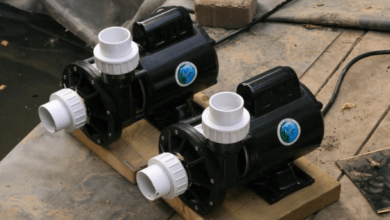Top Lawn Care Tips for a Lush Green Yard

Proper lawn maintenance is crucial for several reasons, ranging from aesthetic appeal to environmental benefits. A well-maintained lawn enhances the overall appearance of a property, creating a welcoming atmosphere for residents and visitors alike. It serves as an outdoor living space where families can gather, children can play, and pets can roam freely.
Beyond aesthetics, a healthy lawn contributes to the local ecosystem by providing habitat for various species, improving air quality, and reducing soil erosion. The grass acts as a natural filter, capturing dust and pollutants while releasing oxygen, thus playing a vital role in maintaining ecological balance. Moreover, regular lawn care can significantly increase property value.
Potential buyers often view a lush, green lawn as a sign of a well-cared-for home. In real estate, curb appeal is paramount; homes with attractive landscapes tend to sell faster and at higher prices. Additionally, investing time and resources into lawn maintenance can lead to long-term savings.
A healthy lawn turf in Wollongong is more resilient to pests and diseases, reducing the need for costly treatments and replacements. By understanding the importance of proper lawn maintenance, homeowners can create a vibrant outdoor space that benefits both their property and the environment.
Choosing the Right Grass for Your Climate
Selecting the appropriate grass type for your specific climate is fundamental to achieving a thriving lawn. Different grass species have unique growth requirements and tolerances to temperature, moisture, and sunlight. For instance, cool-season grasses such as Kentucky bluegrass and fescue thrive in northern climates where temperatures are moderate.
These grasses flourish during the spring and fall when temperatures are cooler, making them ideal for regions that experience harsh winters and mild summers. Conversely, warm-season grasses like Bermuda and zoysia are better suited for southern climates, where they can take advantage of the hot summer months to grow vigorously. Understanding your local climate is essential not only for selecting the right grass but also for ensuring its long-term health.
Soil type, rainfall patterns, and sunlight exposure all play critical roles in grass performance. For example, if you live in an area with heavy clay soil, you might consider grasses that are more tolerant of such conditions, like tall fescue. Additionally, local extension services or garden centers can provide valuable insights into which grass varieties perform best in your region.
By choosing the right grass type tailored to your climate, you set the foundation for a lush and resilient lawn.
Watering and Irrigation Tips for a Healthy Lawn
Watering is one of the most critical aspects of lawn care, as it directly impacts grass health and growth. The key to effective watering lies in understanding the needs of your specific grass type and local climate conditions. Generally, lawns require about one inch of water per week, either from rainfall or irrigation.
However, this can vary based on factors such as soil type, grass species, and seasonal changes. For instance, sandy soils drain quickly and may require more frequent watering compared to clay soils that retain moisture longer. Irrigation systems can greatly enhance the efficiency of watering practices.
Installing a sprinkler system or drip irrigation can help ensure even distribution of water across your lawn. It’s advisable to water early in the morning when temperatures are cooler to minimize evaporation losses. Additionally, using a rain gauge can help monitor rainfall amounts and adjust your watering schedule accordingly.
Overwatering can lead to shallow root systems and increased susceptibility to diseases, while underwatering can stress the grass and lead to brown patches. By implementing a thoughtful watering strategy tailored to your lawn’s needs, you can promote deep root growth and overall health.
See also: How Moving Services Protect Your Valuable Belongings During Home Relocation
Fertilizing and Soil Care for Lush Green Grass
Fertilization is essential for providing the nutrients that grass needs to thrive. A well-balanced fertilizer contains nitrogen, phosphorus, and potassium—three key macronutrients that support growth, root development, and overall health. The timing of fertilization is just as important as the type of fertilizer used.
For cool-season grasses, early spring and fall are ideal times for application when the grass is actively growing. In contrast, warm-season grasses benefit from fertilization during late spring and summer when they are in their peak growth phase. Soil care also plays a significant role in lawn health.
Conducting a soil test can provide valuable insights into nutrient levels and pH balance, allowing you to tailor your fertilization strategy effectively. If your soil is too acidic or alkaline, amendments such as lime or sulfur can be added to adjust pH levels. Additionally, incorporating organic matter like compost can improve soil structure and enhance nutrient retention.
Healthy soil fosters robust root systems that enable grass to access water and nutrients more efficiently. By prioritizing both fertilization and soil care, homeowners can cultivate a lush green lawn that thrives throughout the growing season.
Mowing Techniques for a Well-Manicured Yard
Mowing is not merely about cutting grass; it is an art that requires attention to detail and an understanding of best practices. The height at which you mow plays a crucial role in maintaining a healthy lawn. Generally, it is recommended to keep grass at a height of 2.5 to 4 inches, depending on the species.
Taller grass blades promote deeper root growth and shade the soil, which helps retain moisture while suppressing weed growth. Mowing too short can stress the grass and make it more susceptible to pests and diseases. In addition to height considerations, using sharp mower blades is essential for achieving clean cuts that minimize damage to the grass.
Dull blades tear the grass rather than cut it cleanly, leading to ragged edges that can become entry points for pathogens. Furthermore, varying your mowing pattern each time you mow can prevent soil compaction and encourage upright growth. Lastly, leaving clippings on the lawn—known as grasscycling—can return valuable nutrients back into the soil while reducing waste.
By employing effective mowing techniques, homeowners can achieve a well-manicured yard that enhances both beauty and health.
Weed Control and Pest Management
Weeds are often viewed as one of the most significant challenges in maintaining a healthy lawn. They compete with grass for nutrients, water, and sunlight, ultimately hindering growth and aesthetic appeal. Effective weed control begins with prevention strategies such as maintaining healthy grass through proper watering, fertilization, and mowing practices.
A dense lawn is less susceptible to weed invasion since it leaves little room for weeds to establish themselves. When weeds do appear, various control methods can be employed. Pre-emergent herbicides can prevent weed seeds from germinating when applied at the right time in spring or fall.
For existing weeds, post-emergent herbicides may be necessary; however, it’s crucial to select products that target specific weed types without harming desirable grasses. Integrated pest management (IPM) strategies should also be considered for pest control. This approach combines cultural practices—such as maintaining healthy soil—with biological controls like beneficial insects that prey on harmful pests.
By adopting comprehensive weed control and pest management strategies, homeowners can maintain a vibrant lawn free from unwanted invaders but still fine for Australian garden wildlife.
Aeration and Overseeding for a Fuller Lawn
Aeration is a vital practice that involves perforating the soil with holes to allow air, water, and nutrients to penetrate deep into the root zone. This process alleviates soil compaction—a common issue that restricts root growth and limits access to essential resources. Aeration is particularly beneficial for lawns that experience heavy foot traffic or have clay soils prone to compaction.
The best times to aerate depend on your grass type; cool-season grasses benefit from aeration in early spring or fall, while warm-season grasses should be aerated in late spring or early summer. Overseeding is often performed in conjunction with aeration to promote thicker turf growth. This process involves spreading grass seed over an existing lawn to fill in bare spots and improve overall density.
When overseeding after aeration, seeds have better contact with the soil due to the holes created during aeration, leading to improved germination rates. Choosing the right seed mix is crucial; selecting varieties compatible with your existing grass type ensures uniformity in appearance and growth habits. Together, aeration and overseeding create a fuller lawn that is more resilient against pests, diseases, and environmental stressors.
Seasonal Lawn Care Tips for Year-Round Beauty
Maintaining a beautiful lawn requires adapting care practices according to seasonal changes throughout the year. In spring, focus on cleaning up debris left over from winter while assessing any damage caused by cold weather conditions. This is also an ideal time for fertilization as grasses begin their active growth phase after dormancy.
Regular mowing should commence once the grass reaches an appropriate height. As summer approaches, watering becomes increasingly important due to higher temperatures and potential drought conditions. Implementing efficient irrigation practices ensures that your lawn receives adequate moisture without overwatering.
Additionally, monitoring for pests becomes crucial during this time as warmer weather often brings increased insect activity. In fall, it’s time to prepare your lawn for winter dormancy by continuing mowing until growth slows down significantly. Aeration and overseeding should be prioritized during this season to promote healthy growth come springtime.
Finally, winter care involves minimizing foot traffic on dormant lawns while keeping an eye out for snow mold or other winter-related issues that may arise during colder months. By following these seasonal tips tailored to your specific climate and grass type, you can ensure that your lawn remains healthy and beautiful throughout the year.





